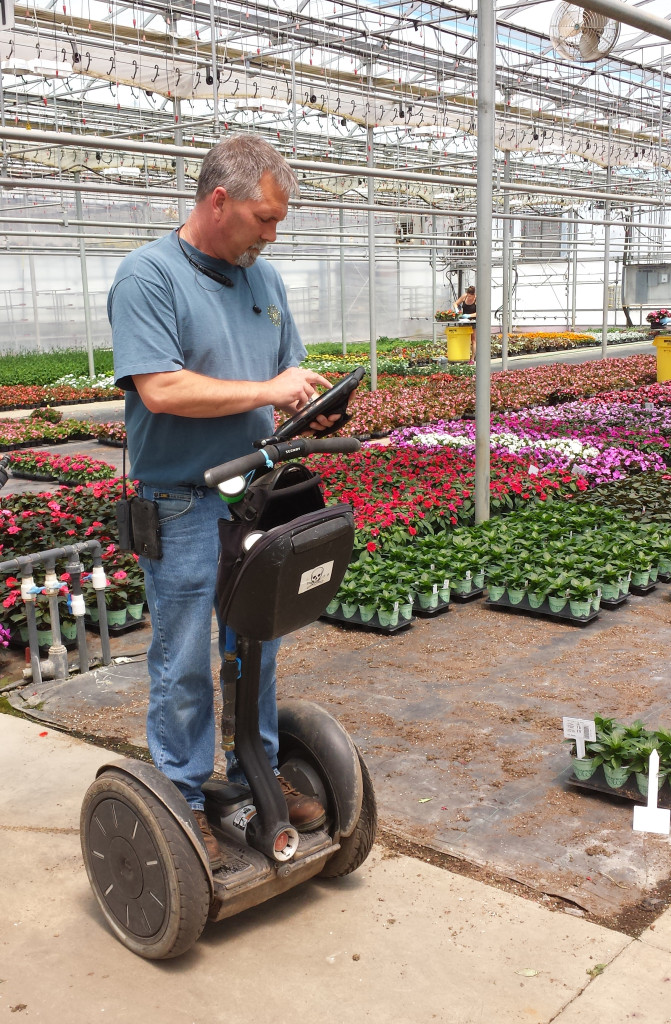
Going Mobile — Breaking Free from the Chains of Your Desktop
Many greenhouses today have backend systems that are used for processing orders, maintaining their production, keeping an accurate inventory and tracking labor. For many, access to these backend systems means being at your desk where you can access your backend software through your desktop computer. This usually means writing something down on a piece of paper while in the greenhouse or field and looking up the needed information or entering the data when you get back to your desk. This is not an efficient model by any standards.
Need for Change
Over the past few years, there has been an increased desire to have better access to backend information while in the greenhouse. Don't get me wrong, many greenhouses have been using mobile technologies to collect data for years, but for most, these mobile units are being used to collect information in a batch process (e.g. verifying quantities planted, physical counts, germination rates, etc.). These batch data collection tools are ideal for collecting data in a repetitive process where the understanding and the evaluation of the data is not necessary as part of the process. These devices are rugged and designed to hold up in the greenhouse environment, but are not as useful when it comes to quickly accessing backend information to either help in making decision, editing of data or generating new tasks to be performed on crops (pinching, patching, chemical applications, etc.).
Breaking Free
Where it made sense, greenhouses would put a workstation in shipping or planting areas so that data could be collected in real time and numbers could be looked at on monitors to evaluate pace, performance, as well as what had been completed. This still left a void out in the actual greenhouse where work was being done and information was needed. It was not very practical to load up your workstation and head out to the greenhouse, even if your workstation was a laptop. With the advent of the smartphones, tablets and apps, everything changed. You now have something that is truly portable and smart enough to access your backend system. Keep in mind that to truly break free from the chains of your desktop, you do need some type of connectivity back to your backend software. This can be done with either Wi-Fi access in the places you need it in the greenhouse or a cellular service on your phone or tablet.
Now What?
With the chains now broken and full freedom to roam the greenhouse with data access at your fingertips, the sky is the limit. With the pairing of a Bluetooth scanner, you can even eliminate the need for a keyboard. You may be wondering, what types of things can I really do in the greenhouse with a portable device like a tablet or smartphone, and is this really necessary? Below are some examples of functions that are being used by some Picas customers:
- Basic inquiry on a crop to know: How many were started? How many are available? Where else in the greenhouse might this product be located? Have there been any chemical applications done to this crop?
- Movement of a crop from one area in the greenhouse to another. In the past, this was written down on paper, updated back in the office and move sheets were generated for the crews. Now the movement is documented in the greenhouse and move sheets are automatically generated for the crews. If you are unsure of where a product can be moved, you have access to that information as well.
- Generation of activities that need to be performed on a crop (pinch, cut-back, top cut, chemical applications, etc.) as you are monitoring the crop. This also allows you to see any standard activities that were planned, make decisions regarding whether they should still be performed or see if the activity has been performed.
- Grading of a product as you are walking the crop. This can include readiness exceptions as well as actual grading like (green, cracking color, full color, etc.).
- Verifying that an order has the correct product on it or confirming what product is on an order, so that you can change the order to match what is actually shipping to the customer.
- Verifying the tags you are shipping to a customer are correct.
- Making notes about crops and taking pictures to document problems.
- Easy answering of employee questions as to where else a product might be located in the greenhouse as well as what tasks need to be performed next.
- Access to time clock and labor information to know what an employee should be working on or to change a group of employees from one task to another. Access to this information also allows you to quickly identify where certain employees might be struggling with a task (sticking cuttings) and need additional training.
- Looking up information via the web to access additional cultural information, pictures, disease information and any growing information that can help you make decisions quickly and accurately.
The Future
This is just the tip of the iceberg. As with most technology, once it starts to get used, ideas for new uses start growing at a rapid rate. As the power of the tablet increases, users will not only have increased access to their backend software and systems, but will also have access to any information they can connect to. One thing is clear: the inefficiency of being chained to your workstation is now a thing of the past.
Going Mobile — Breaking Free from the Chains of Your Desktop









 Video Library
Video Library 


















